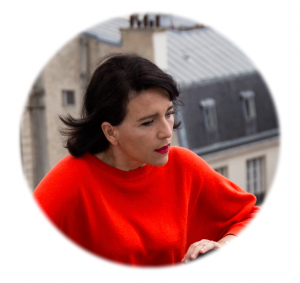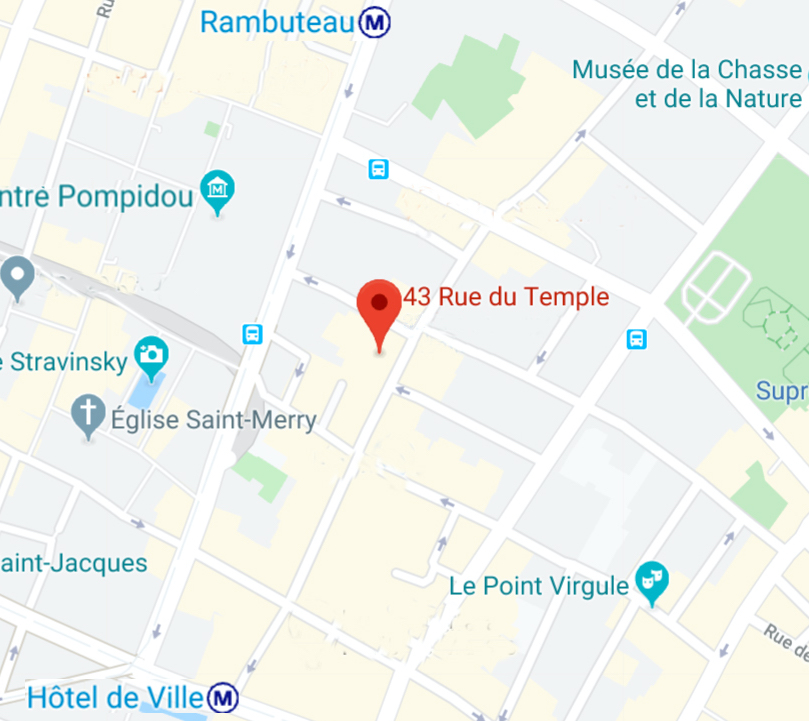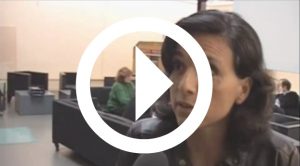Because I am convinced that in order to become desirable, a brand must be able to tell its story from an emotional point of view in order to reach its targets at the heart, because I want to inspire brands to become inspiring themselves, and because I like to « take them under my wing » so that they can take flight, I have created the place to be so that each brand I accompany finds its own place in the world, its
« place to be »
WHAT IS IT ?
My definition: storytelling without storytelling
The era of marketing that used to tell its customers stories (or, in other words, lies) is well and truly dead… Today, in the age of the Internet, it is no longer conceivable to feed a brand with false truths because everything is known, everything is revealed and everything is exacerbated, the brand must tell the truth about what it is and what it does… It must no longer just tell what it does but why it does it, as the excellent Simon Sinek tells it so wonderfully well in his book on WHY.
And to tell its story, a brand must go and draw on its brand origins, its roots, its history and that of its founders, but also on the very heart of its values and fundamentals… so it can write its brand manifesto (also called manifesto) then its brand platform, then finally its brand book.
This brand book, also known as the brand bible, will serve as a basic narrative tool for the brand’s various internal and external audiences.
EMOTIONAL STORYTELLING
Talk to the right brains… to make yourself desirable…
For the record, the left brain is the brain of the rational and logical, the right brain is the emotional and intuitive (well to simplify because in reality it is much more complex!!!). Very often marketing data concerning brands or products are in the domain of the left brain, we talk about objectives, figures, targets, ratios, plans, profitability forecasts…
At the same time, the consumer will receive the brand or the product with his emotional senses, sight, hearing, smell, sensation, intuition and the whole panoply of his emotions… it is moreover now proven that the act of buying is ultimately triggered by the right brain of emotions and not by the right brain of reason.
Storytelling makes it possible to translate all the rational elements of a marketing brief into creative stimuli for creative teams who have a much more developed right brain than their left brain, so that they can work on developing the product or brand codes that will reach the end consumer, who is also at the heart of his right brain.
Storytelling, results in a synthesis of emotional and rational elements that tells the story of the brand or product in the making, the brand platform.
In the end, this platform guarantees a complete and coherent brand perception. It is both a working tool and, above all, a communication tool.
BRAND CREATION
Being born under a lucky star isn’t always enough…
When a new brand is born, it is often the result of the intuition and talent of one or more people. Sometimes, however, its progenitors may find it difficult to express all the greatness of their offspring, and even if the brand was born under a lucky star, it will not grow, or it will grow badly… in addition to ‘know-how’ in terms of branding, we also talk about ‘making known’…
I have seen the birth of some very pretty brands that had not been written history, and whose genetic heritage was not clear, they did not stand up to the competition of the big league.
The end consumer needs to know the identity of the brand he is consuming, or at least to decipher it. To do this, they need to formulate and describe the brand, define its territory, tell its universe, and claim its values. Then it is necessary to engrave all this in marble, then make sure that these elements will be known, communicated, conveyed and transmitted… Then the brand will have the necessary baggage to face the competition and its consumers. Then the brand will have the necessary baggage to face the competition and its consumers. It will have the shoulders to withstand the damage of time.
VALUES AND ALIGNMENT
Building on its fundamentals to give consistency… and sell….
In the 30 years that I’ve been working for brands (ouch, already!) I’ve found, and several studies show, that the most desirable brands are those in which their clients have total confidence. This trust is directly correlated on the one hand to a sharing of common values in which they recognize themselves, and also depends on their brand consistency in the way they are aligned with their raison d’être, their vision and their brand values. I am today a specialist in the emergence and narration of brand values for which I have co-created a set of 200 Value Cards, the only comprehensive reference in the world…
But so that this work does not remain on a shelf, I have also imagined tools for appropriation and alignment in all the daily actions of a company, in its product design, in its communication, in its places of life and sales, and even in its recruitment and individual behaviour. In addition, they enable a single vision to be shared both internally and externally, thus guaranteeing a high degree of brand consistency. This is why I attach so much importance to this notion of alignment when I develop a brand platform and a brand book for one of my clients. Consistency > trust > desirability
BECOME DESIRABLE AGAIN!
I know how to wake the sleeping beauties…
Sometimes marks fall asleep on their laurels, this was the case with Petit Bateau when I met them in 1994. The brand hardly existed any more, recently bought by the Yves Rocher group, the management was wondering how to wake up this sleeping beauty (I tell you this beautiful story at the very bottom of the page). Lately, I have been reliving this great adventure with PAP (de particulier à particulier), which despite a great reputation and « glorious » years seems to have also slowly « fallen asleep on its laurels » by noticing that it was no longer recruiting at the height of its brand potential. This brand, which built its success on its paper newspaper, found itself confronted with a narrative problem after its transformation to digital at a time when it needs to know how to tell its story, particularly on social networks to establish a link and dialogue with its audiences…
Based on this observation and with a concern for structuring and legibility, the brand wanted to be able to tell its vision of the brand and its formidable forgotten values to make itself desirable to customers, prospects, actors or potential partners. I therefore accompanied them in the development of their brand platform in order to regain meaning and build on solid foundations for their internal and external communication actions. This tremendous work carried out in conjunction with the great DA Brogen Averril allowed everyone to have a clear vision of what the brand is, what its positioning is, and what are its specificities compared to the competition. The coherence thus generated by all the brand’s signals generates confidence among its audiences and therefore « desirability ».
HOW IT WORKS
Knowing how to adapt your request to your needs to save time… and money.
To do this, it is therefore a question of analysing the content of the brand, rediscovering its founding values, working on its positioning and its universe in order to be able to easily tell it in a coherent, impactful and sensitive way on different media such as the website, social networks or any presentation or press kit. This allows the vision to be transmitted to consumers, but also to all partners in the development of the different communication campaigns and their variations, or to transmit to newcomers, the brand bible which is both the temple and the keeper of the brand for the years to come. This is to guarantee the coherence of the messages… readability and consistency are the secrets of desirability.
Depending on the degree of urgency, budgetary or planning imperatives, the intervention will be tailored to each case, but in general, the three major steps that I recommend are as follows :
1° stage, first approach values, golden circle and manifesto
2nd stage, brand platform and story telling
3rd stage, complete brand book.
VALUES AND PURPOSE
A first approach to position yourself well
This initial work begins after collecting responses to a questionnaire on internal brand perception and values. It is generally carried out in the form of workshops that I lead with the « steering committee » designated in collaboration with the brand prior to the study. This method allows for an internal capilarisation of the approach and the involvement of the personnel chosen for the elaboration and the good outcome of this project.
This phase includes :
• Creation and analysis of an internal questionnaire
• Animation of workshops of the steering committee
• Search for keywords (lexical fields of the brand)
• Search or validation of brand values (the set of 200 values)
• Golden circle by Simon Sinek (WHW: what how why)
• Brand Manifesto
BRAND PLATFORM
It is wiser to build on a solid foundation if you want to be sustainable…
During this second phase, it is a question of translating these values and this golden circle on a daily basis into the different actions of the brand, and of writing its « beautiful story ». What are the words, images and codes that make up the brand and give it its identity, but also what is its vision, ambition and positioning.
I then focus on developing tools that allow these values to be translated into the main vectors of the brand.
These tools are :
• narration of brand values
• finalizing the manifesto
• brand pyramid (vision, ambition, values, target, offer, benefits…)
• Kapferer’s prism on brand identity and personality
• matrices for defining and evaluating brand actions
• Mood boards for emotional and sensitive storytelling
BRAND BOOK
Leaving a trace that will avoid drifting through time
All of this work is then centralized in a brand book, also known as a « brand bible » detailing the brand platform. It specifies the brand’s territory and its positioning. It also serves as a training tool for newcomers, but also for partners and service providers. It also specifies the territory of creative expression, the brand codes, colour codes, formal codes, graphic codes that belong to the brand and outlines them in order to guide and facilitate the creation of all communication tools.
It includes :
• The manifesto and the beautiful story
• The brand offer
• The brand platform
• The communication platform
• The brand codes
• The matrices of use
THE BEAUTIFUL STORY
My story is also a beautiful story
After a creative course in Architecture and Design, I created the graphic department of a large design agency. I spent 15 years as an associate creative director in this group which counted up to 70 people. In addition, I was in charge of the group’s human resources and deputy general management. Among other things, I managed the changes to the Petit Bateau, Jean Paul Gaultier, Issey Miyaké, Guerlain, Lafuma and Mumm Champagnes brands.
Since then, I have created a new structure dedicated to brand storytelling: The Place To Be. I support emerging brands or the products I choose as they change.
I am responsible for analysing territories, positioning, developing and narrating new concepts, and providing artistic direction for the implementation actions. I also work on the narration of these brands for internal use or for their audiences (story telling).
I work in synergy with a network of skills that are related and complementary to mine, according to the needs of each of my projects.
This flexible, light and reactive structure fits well with the needs of the market, and allows me to work on brands and projects for which I see real potential and with which I enjoy working!
IASAGORA
Collective of agility consultants
In addition to my activity within the place to be, I chose to belong to the ias.agora consultants’ collective specialized in agility, bringing my brick vision and brand strategy. We accompany our clients in their agile transformation on the 4 systemic dimensions: the individual, the strategy, the project and the governance. Our iasa method agile and sensitive innovation in action – is inspired and focused on proven approaches:
- Agile (practiced by gafam actors)
- Customer-oriented creative innovations (design thinking, scrum)
- Collaborative governance (holacracy, sociocracy and opal enterprise)
- Coaching (individual, team, organizational)
Our manifesto: We are convinced that energizing the collective makes it possible to dare the unexpected. We believe that cultivating customer-centric agility and creativity is a powerful lever to achieve this. We are a multi-domain talent pool that brings together and activates large teams with ambitious projects. Around an exclusive IAS.A (Agile and Sensitive Innovation in Action) approach, we decompartmentalize strategy, governance, the individual and the project, with a touch of cheerful impertinence and creative boosts. We carry out tailor-made interventions involving consulting, facilitation, training, coaching, and creative steering.
DIPLOMAS & REFERENCES
So much for that!
Diplomas:
Bac C (scientific section)
DEFA in architecture (UP9 Paris)
Diploma from ESDI (École Supérieure de Design Industriel)
Diploma in Management and Human Resources (CEGOS)
Holacracy practitioner training delivered by Bernard Marie Chiquet (IGI partners)
Training in agile methods (Design thinking, Scrum, Kanban, creativity …) by Iasagora
I teach creative management at the ECV (School of Visual Communication).
I also teach storytelling at the Pôle Supérieur de Design de Villefontaine (Lyon) in DSAA, as well as at the ESP in Paris (École Supérieure de Publicité).
They have put their trust in me:
Parfums Chanel, Parfums Guerlain, Le Bain Collection, Danone, Dr Pierre Ricaud, PAP de particulier à particulier, Rubel & Ménasché, Gouters magiques, Lili’s, Crédit Municipal de Toulon, Compagnie de Provence, Bourjois, Burberry, Martine Leherpeur, Jean Paul Gaultier, La Vache Noire, Yves Rocher, L’Oréal, Decléor, Dulux Valentine, Elycorp, Estée Lauder, Etam, Florame, Laboratoires Garnier, By jardin, Terre de Chine, Richard James, La Prairie, Pierre Sang, Gieves & Hawkes, HEC, Arpège restauration, Bon Parfumeur, Cardo Paris, La Cagnotte des Proches, Boulangeries Boréa, Parfums Rochas, private sale. com, Weleda, Zilli, Atypyk, Grenade, Sacha Lakic Design…
PETIT BATEAU
The story of a rebirth… and the birth of my passion!
In 1994 when I met the brand, I was then associate creative director in a design agency, in charge of the visual identity, packaging and publishing department. Petit Bateau had just been bought by the Yves Rocher group after some difficult years, and the new team in place was looking for ways to relaunch the brand.
We took part in the competition organised by the brand and we won… by telling a story. The story of a Petit Bateau revisited. Since its birth in 1893, Petit Bateau has collected fundamental values that have always positioned it clearly, even if at the time they were not named, but just intuitively implemented: innovation, quality, creativity, and humour, and its communication clearly expressed these values.
Until the 1950s, the communication told the adventures of the mischievous little girl with the quilts, Marinette, and her brother Marin, to praise this dynamic and creative brand. In the 70s, we all had striped terry cloth pyjamas and white cotton panties, and the communication showed children in bunk beds (the top at the time) having a pillow fight (already a bit transgressive!).
Then the brand got lost from marketing department to marketing department, it was only consumed by a few Grannies in need of gifts for the youngest child, in « sad » doll’s house shops.
For her centenary in 1993, she communicates through a film, lost in a universe of desolation, on a ghost ship, with taciturn and ethereal children… who do nothing… Yet a very aesthetic and well-made film by Sarah Moon, but in which the brand codes that made Petit Bateau so special have disappeared.
It wasn’t long after that we had the chance to work on the brand and wake up that sleeping beauty. To win this competition, we decided to make… a book, a book that told the story of the brand, page after page, as it was to become, a book that described a world of children, as they are in real life, not model children, no, children who do stupid things, who put their fingers in their nose, and who cover themselves with stains when they paint.
Not model children, just children.
The strongest visual in this book was a little boy of 3-4 years old wearing a yellow raincoat who was sailing a little paper boat… in a gutter.
And it’s this discrepancy that makes us go from the image of Epinal to real life, and it’s this discrepancy that tells a story in which everyone recognizes themselves.
This book already contained the beginnings of everything we did afterwards for 10 years, the packaging of T-shirts in their emblematic yellow window box, the furniture for the children, and above all, the right to do things in these clothes.
Then on this basis, the advertising agency created an extraordinary film on Jacques Dutronc’s music « fais pas ci, fais pas ça » where children only do stupid things, this film had an incredible energy, and told perfectly all the platform we had elaborated. The catchphrase told the universe well: Petit Bateau, what’s the point of inventing clothes if you can’t do anything with them?!!
And it’s because we had given the brand back to the children that it became alive again, this brand belonged to them since its birth, we just had to give it back to them. To do this, we doubled the entire narrative, the brand was primarily aimed at children, but we still had to get messages across to parents, so at the point of sale, in promotional operations, and every time the brand spoke, we created two levels of reading. In the shops, everything below one metre was aimed at the child (furniture, games, coded messages, hanging clothes…) and everything above that was aimed at the parents (segmentation, sizes, products, promotional messages…). In the animation
operations, we used two typographies, one talking to children, the other talking to adults, the same thing on the site, a children’s entry, an adult entry.
Then came in parallel the fashion of the tee-shirt close to the body, and the teenagers started to divert the tee-shirts of their little sisters in a good child lolita spirit, then the adults followed with immense pride at 40 years old to be able to wear a tee-shirt in 18 years (maxi size of the brand)… and the incredible commercial success that we know, the opening of nearly 100 points of sales in a few years, then NY then London.
As a conclusion, I’ll tell you a little « failure » of the brand which was to want to address teenagers by creating a special collection for them, in a packaging with a teenage code, in jeans and kraft with a photo of a sulky teenager. It was a real flop because when the girls came to the points of sale, they would say « no, I don’t want that one, I want the real one… ». All the teenage T-shirts were recalled, and put back in yellow window packs, children’s packs…
Storytelling is also about telling stories without telling stories, not lying, remaining honest and true. Petit Bateau is a brand for children… nothing else.
From that day on, I understood that in order to become desirable a brand must be able to tell its story from an emotional point of view in order to touch its targets in the heart, and that I wanted to inspire brands to become inspiring themselves, so I created the place to be so that each brand I accompany finds its “place to be“.
Interview on the story telling




